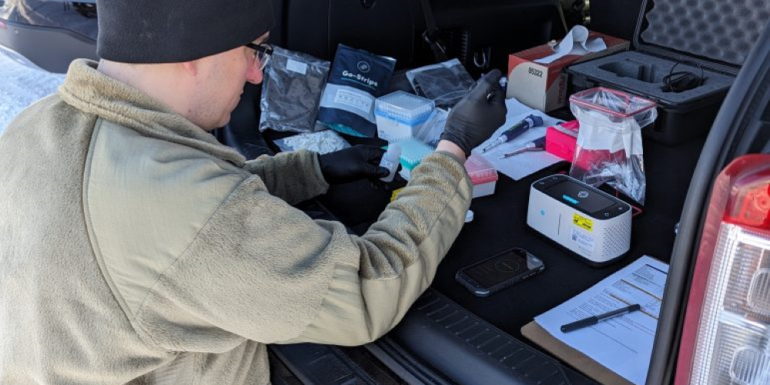The mission of the U.S. Army Medical Research and Development Command (MRDC) is to create, develop, acquire, and deliver medical capabilities to the Warfighter. A critical part of ensuring mission success involves testing those capabilities in real-world conditions. Throughout the year, MRDC’s nine direct reporting units (DRUs) regularly participate in Army, joint service, and multinational training exercises. They provide scientists and Warfighters alike with hands-on opportunities to stress-test new capabilities and their protocols in a wide range of real-world conditions to ensure they are reliable and address gaps in providing far-forward care and returning Warfighters to duty.
Two years ago, MRDC wanted to field multiple teams from across its DRUs to participate in Project Convergence (PC), a joint, multiyear and multinational experiment in the effective integration of modernization capabilities that is organized by the U.S. Army Futures Command (AFC), MRDC’s parent organization. But having each DRU coordinate individually with the experiment’s sponsor would risk confusion, inconsistency and redundancy for the DRUs and could also significantly increase the logistical, resourcing and administrative burden on the sponsors. So, Maj. Gen. Anthony L. McQueen, MRDC’s then-commanding general, charged the Office of the Principal Assistant for Acquisition—the organization responsible for fielding new and improved medical capabilities to end users after thorough testing and evaluation for use in austere combat environments—with creating an Experimentation Integration (EI) Cell to serve as a central coordination point for the command’s participation in persistent experimentation events.
The EI Cell has demonstrated success in reducing points of contact, streamlining the coordination process, integrating capabilities, and improving the consistency and quality of information dissemination at PC 2022. As a result, it has become MRDC’s standard method for participating in readiness and interoperability exercises as a way to provide real-time testing of new medical technologies for the warfighter.


